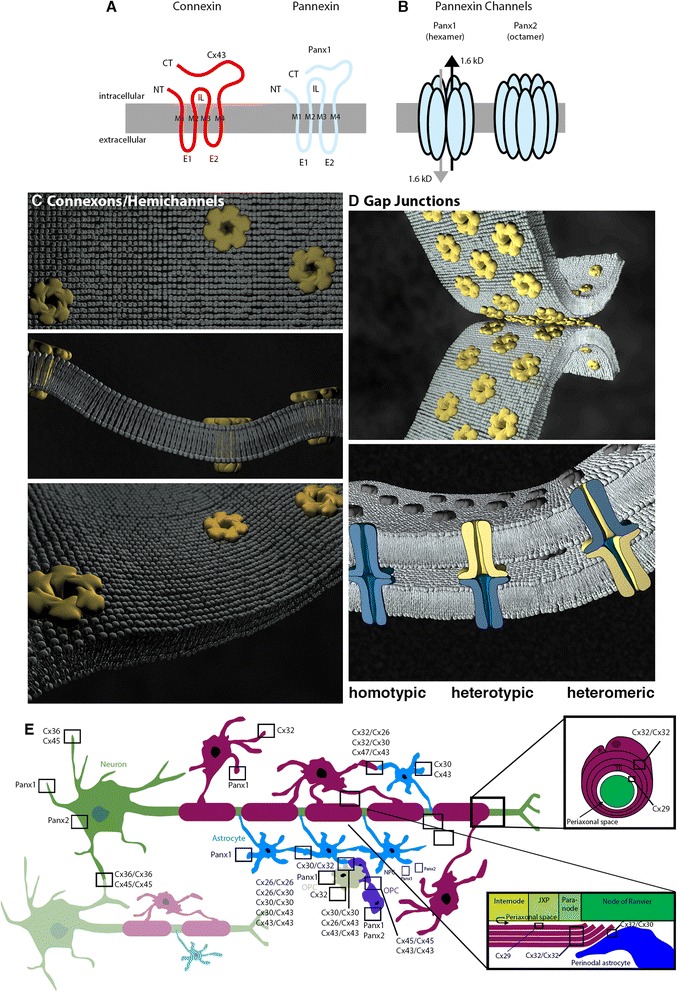Fig. 1.

Cx and Panx nexuses. a Cxs are the structural units of single membrane channels (hemichannels) and intercellular channels (gap junctions). Panxs are primarily single-membrane channel proteins. Membrane topology in monomeric form (i.e., Panx1, blue) is strikingly similar to that of a connexin (i.e., Cx43, red). b Panxs exclusively form single-membrane pores composed of Panx1 hexamers, Panx2 octomers, or possibly Panx1/2 heterotypic channels of unknown numbers of protein subunits. c Cxs oligomerize to hexamers capable of forming single membrane channels (homotypic connexons or hemichannels are indicated). Schematic models crystal structure in a non-junctional lipid bilayer. d Axial alignment of compatible Cx connexons generate homotypic (blue connexon/blue connexon), heterotypic (yellow connexon/blue connexon), and heteromeric (blue-yellow connexon/blue-yellow connexon). e Cx26, Cx30, and Cx43 are expressed by astrocytes. Cx29, Cx32, and Cx47 are expressed by oligodendrocytes. Cx32 is expressed by oligodendrocyte precursor cells (OPCs). Cx36 and Cx45 are expressed by neurons. Cx45 and Cx30 are expressed by NPCs. Panx1 is expressed by astrocytes, OPCs, oligodendrocytes, and neurons. Panx2 is found in neurons and NPCs. Panx single membrane channels, Cx hemichannels/connexons, and Cx-compatible gap junction channels are depicted. Abbreviations: CT, carboxyl termini domain; E1/E2, extracellular loop domains; IL, intracellular loop; JXP, juxtaparanode; M1-M4, transmembrane domains; NT, amino termini domain. Representations are based on [125–127]
